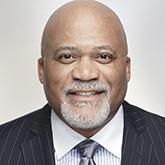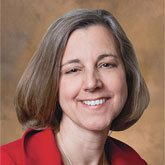Keeping providers & patients in sync
Through years of operations, most healthcare systems become adept at predicting the ebb and flow of patient volumes based on historical data, data around their community populations and seasonal factors, such as the start of summer, return to school and seasonal flu. During pandemic times, the luxury of that predictability is gone, affecting hospital systems in countless ways, from staffing to supplies to planning patient after-care. To make up for this unpredictability, care coordination during COVID-19 requires flexibility, innovation and diligence.
Care coordination can be a challenge even in normal times, and during a pandemic, it’s especially critical for patients to understand their plan of care once they’re home to prevent readmissions and other health issues.
Expecting the unexpected
Over the last year, hospitals have experienced sporadic, regionalized and repeated upticks of COVID-19 activity.

For some health systems, just one community outbreak can test limits. “COVID put us out of bounds in terms of how to try to allocate resources and what the demand would be in a particular community,” says HealthTrust Physician Advisor William A. Cooper, M.D., MBA, a cardiovascular surgeon at HCA Healthcare and President of Prime Health Services Group. “Prior to this, we had some idea of what the resource burden would be.”
While patients, of course, continued to have emergencies like heart attacks and stroke, others with less life-threatening conditions were not as apt to visit hospitals for fear of contracting COVID-19. To compound the issue, accounting for the needs of COVID patients themselves has proven to be a moving target, given the disease’s erratic nature. “I’ve seen people with low risk, no comorbidities and at young ages having a really tough time, while others have a cough and fever for a few days, and then they’re fine,” says Dr. Cooper.
It’s imperative for health systems to be aware of their local COVID data to help anticipate patient volume fluctuations, Dr. Cooper says. “Positivity rates peak much sooner than deaths,” he explains. “The ideal situation is to have below a 10% positivity rate.” If it’s trending upward, then hospitals can expect an uptick in volume to follow just a few weeks later.
Those variations directly impact staffing—a challenge made more complicated when that very staff is also at risk for the disease. “It’s important to have backup because we have so many staff who are in quarantine, isolated or who have contracted COVID-19 outright,” says Dr. Cooper. As elective procedures, such as joint replacements and mastectomies, have been drastically reduced, operating room staff can be reallocated to other areas, optimizing care coordination for existing patients. “This is common practice in hospitals trying to manage under stressful times,” Dr. Cooper adds.
Employing technology as a coordination tool
COVID-19 patients’ journeys may require several, varied and unpredictable transitions of care. For example, one patient could start at the ER, move to the ICU, then on to a COVID-19 unit, and when they’re released home, go to their primary physician for a follow-up visit. Another patient with mild symptoms could receive a COVID diagnosis through a drive-through testing site, recover at home and only see a care provider at a follow-up appointment. A third could see their primary care physician virtually, only to end up at the hospital.

“A COVID-19 patient going through this process may not want to physically visit their doctor, so they might do a virtual visit,” explains Karen Bush, MSN, FNP, BC, NCRP, Director of Clinical Research & Education at HealthTrust. “If they get worse, they go to the ER. All the information that was exchanged during that virtual visit needs to follow the patient into the ER.”
With each transition, there is a risk for gaps in care.
The patient’s health record should follow them to each visit—each care provider must know which tests were performed and when, which treatments were given and how symptoms presented. This applies to all patients with a variety of conditions.
Electronic health records (EHRs) are essential in the coordination effort because they, in theory, follow the patient everywhere. Sometimes, there are vulnerabilities due to interoperability issues when providers use different technology systems than the hospitals, but a solution may be on the horizon.
“We are in an evolutionary period with the electronic medical record,” says Dr. Cooper. “We’ve got to manage away from all the redundancy and superfluity, and I think we’re going to get there with artificial intelligence.”
Key players in this space, including Epic, Cerner and MEDITECH, have recently begun introducing artificial intelligence (AI) capabilities into their EHR products, according to a 2020 report by KLAS, a market research firm. While AI can help predict things like hospital readmissions, falls, sepsis infections and mortality rates, it can also assist providers with accurate coding, documentation, chart searches and voice-enabled commands. (As in, “Hey, Epic! Look up my patient’s lab tests.”) These features will help streamline how clinicians use EHRs and make them more flexible and valuable.
Doubling down on communication
The EHR is vital but is not a substitute for verbal communication. “Providers really need to talk, specifically about conditions that can affect a patient’s care,” says Dr. Cooper. He notes that rapidly ramping up telehealth and telemedicine has been a positive step and hopes the widespread utilization continues. “That’s not to undermine the importance of an in-person visit, but when you have an established relationship between provider and patient, it may not be as important as we may have emphasized in the past.” Patients should be encouraged more than ever to ask questions and take an active role, particularly during the pandemic, to prevent lapses in care.
Another problem that COVID-19 presented for care coordination is that family members have had visitation restrictions to avoid virus exposure. This creates a potential communication gap because family members are often a good source of information for providers. They’re advocates for the patient, helping them keep track of information they’ll need when they’re back home. Telehealth visits have helped to solve for this.
Most hospitals now permit a family member to accompany a patient while in the hospital or emergency department, which is particularly valuable for elderly patients and those with cognitive impairments. Visitation policies should be reviewed and updated to ensure safety, flexibility and fairness in terms of who is allowed visitors and when. Hospitals should make a concerted effort to stay in frequent communication with patients’ families. One solution is to hire or repurpose staff to serve as communication liaisons who can help ensure patients and families have regular opportunities to connect over phone or video calls.
Being diligent about discharge & follow-up care
Hospital discharge is perhaps the care transition that is most vulnerable to a breakdown in communication. Virtual visits can be one way to help, and for high-risk patients, many hospitals are making exceptions and allowing one family member to be present during this process.
“Hospitals go out of their way to make sure high-risk patients have a support person available during the discharge process, but it’s a challenge,” says Bush. Communication tools, such as the teach-back and show-me methods, have greatly improved patient understanding and treatment adherence and are even more important during the pandemic.
A discharge summary is required for the EHR, but it’s not always immediately available, and it isn’t a replacement for verbal communication. It is critical for the community provider and hospital provider to have a verbal conversation during discharge. Having a patient navigator or transition coach assigned to patients at high risk for readmission can help guide the discharge process and ensure better outcomes after the patient returns home.
Strengthening care coordination is essential to patient outcomes and to the understanding of COVID-19 as a whole. Patients who had pneumonia while in the hospital, for example, need to be monitored for long-term respiratory complications. Because we’re still learning about COVID-19, post-discharge follow-up care will help providers continue to understand the disease’s side effects and ensure that patients successfully recover.
The Centers for Medicare & Medicaid Services (CMS) recently introduced a new geographic direct contracting model, also known as “the Model” or “Geo.” It is a voluntary program for Medicare beneficiaries that leverages best practices in care coordination and encourages building relationships to improve care quality and lower costs. The new care model will serve as a test of whether this approach is effective.
Similar to an accountable care organization (ACO), the program participants are required to take 100% responsibility for savings and losses for Medicare Parts A and B. Contracted entities can include existing ACOs, health systems, provider groups and health plans.
There are 15 defined target regions that CMS is considering throughout the country. All are U.S. cities where there are between 150,000 and 700,000 Medicare beneficiaries.
The program will run for six years, to include two, three-year performance periods beginning in January 2022. The goals are to improve health outcomes and reduce the cost of care for Medicare beneficiaries. Beneficiaries keep their current Medicare benefits and may receive enhanced benefits such as telehealth and easier access to home care and skilled nursing facility care.
“The need to strengthen the Medicare program by moving to a system that aligns financial incentives to reward people for staying healthy has long been a priority,” said former CMS Administrator Seema Verma in a press release. “This model allows participating entities to build integrated relationships with healthcare providers and invest in population health within a region to better coordinate care, improve quality and lower the cost of care for Medicare beneficiaries in a community.”






